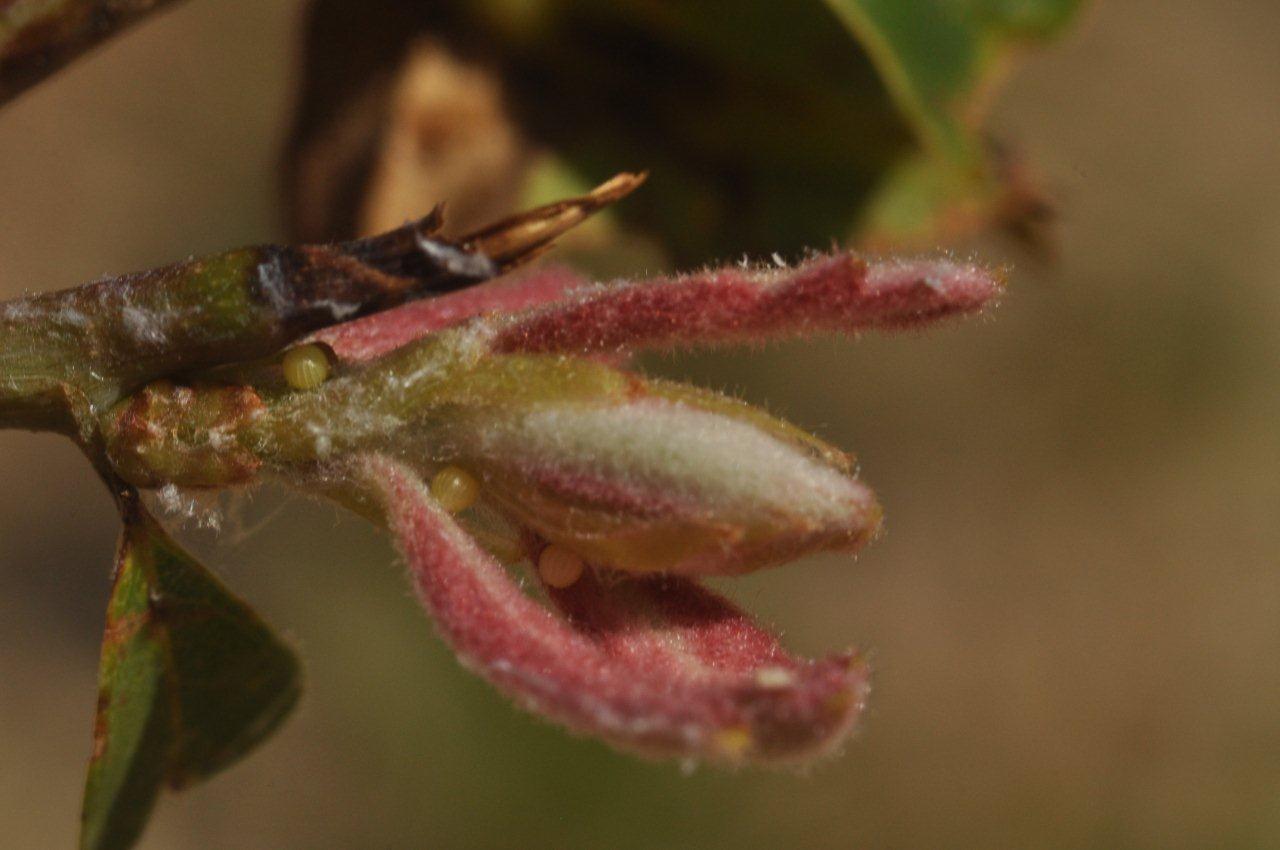A mystery photo along Rt 608 (Cape May County) by Will Kerling, 7/15/11
Can you tell what’s captured in this image by Will Kerling?
No, it’s not a Salvador Dali-ian cartoon of a red-bearded lizard head with one eye and a couple of loose teeth.
Click to enlarge
It’s a cluster of budding oak leaves, studded with three duskywing eggs.
Yesterday afternoon, Will watched a female Horace’s duskywing land on the tip of the branch and oviposit. Then, he leaned in close with his macro. It’s the latest of his delightful photos documenting his explorations of butterfly habitats all over Cape May and Cumberland Counties.
Can field observers study butterflies any closer than this?
The host plant looks like it might be a white oak, Quercus alba (although the leaves are misshapen).
Oak leaf along Rt 608 (Cape May County), photo by Will Kerling, 7/15/11. Click to enlarge.
Generally, most folks seem to agree that we have two broods of Horace’s duskywings in southern NJ and they overwinter as full-grown larva. So, these eggs should hatch shortly and then the caterpillars will feed on the leaves on the tree for the next few weeks. If all goes well, they will eventually crawl off to find a hiding place to overwinter.
Or, do we have three broods of Erynnis horatius in our area — as sometimes it seems — so these eggs will become flying adults in August or September?
Keep shooting, Will!
jc
Just to complete the collection, here’s one more photo by Will of a Horaces, this one from April:
Female Horace’s duskywing by Will Kerling, April 22, 2011. Click to enlarge.



